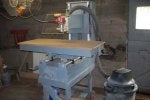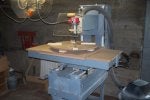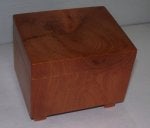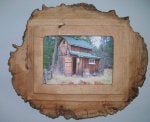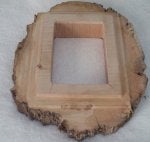I have been reading the forum for a while now seeing what everyone is building, It just amazes me. Anyway I thought I would share with you my creation I have been working of for a couple years. This is the third one I built, improving it each time and I am already planing the next one.
It is basically a milling router. I have 20" of forward and reverse, 30" of lateral movement and and 10" of up and down movement, All controlled by hand cranks. Because a router can cut pretty fast the forward and lateral cranks will move the table 1.25" with one turn. The up and down movement is slower though.
It also has a rotating table attachment and the overarm head can rotate to angle the router.
It is a ball to use and the things you can do with it are just incredible. I am just getting to the point where I am getting a real feel for what it can do.
There are pictures included of a couple clocks I recently milled out of some slabs of black walnut I had. It was effortless and quick. The one clock that is has the block on the right was milled from one piece there is nothing cut or glued on. I have also included a picture of a piece of 4x4 that I was just messing around with to see some of the possibilities.
It is basically a milling router. I have 20" of forward and reverse, 30" of lateral movement and and 10" of up and down movement, All controlled by hand cranks. Because a router can cut pretty fast the forward and lateral cranks will move the table 1.25" with one turn. The up and down movement is slower though.
It also has a rotating table attachment and the overarm head can rotate to angle the router.
It is a ball to use and the things you can do with it are just incredible. I am just getting to the point where I am getting a real feel for what it can do.
There are pictures included of a couple clocks I recently milled out of some slabs of black walnut I had. It was effortless and quick. The one clock that is has the block on the right was milled from one piece there is nothing cut or glued on. I have also included a picture of a piece of 4x4 that I was just messing around with to see some of the possibilities.


